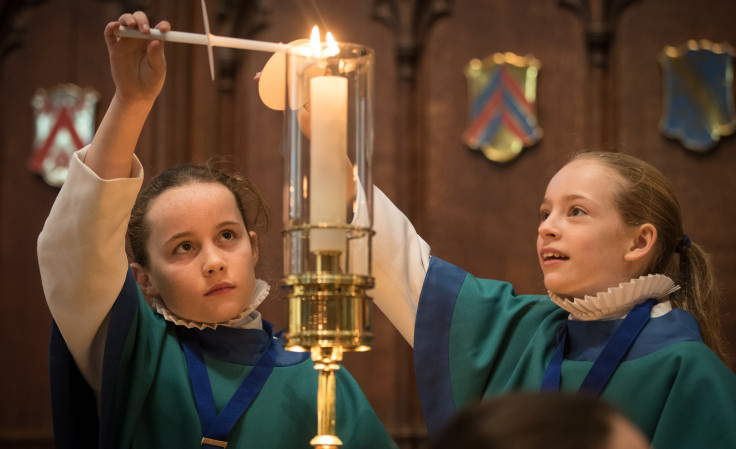Candlemas 2017: Facts, Traditions, Food, History Of The Feast Of The Purification

If you still have some lingering Christmas decorations up around the home then Thursday is the time to finally pack them away. Each year, Feb. 2 marks Candlemas, one of the oldest feasts in Christianity and one that has significance far beyond it being the alternative day to Twelfth Night to remove Christmas decorations.
Dual Celebration
Candlemas dates back to the fifth century to commemorate Jesus being brought to the temple in Jerusalem by Mary and Joseph 40 days after he was born. The presentation of Jesus in the temple, according to the Gospel of Luke, saw Jesus met by Anna and Simeon, with the latter holding Jesus aloft and calling him the “Light of the World.”
However, Candlemas also marks the ritual purification of Mary, which was completed by bringing Jesus to the temple. In Jewish tradition, a woman is seen as being unclean after the birth of a child and must wait 40 days after giving birth to a boy and 60 days for a girl before returning to the temple where they can be purified.
Why Candlemas?
The name “Candlemas” comes from the ritual where Christians would bring their candles to church to be blessed. As a result, many observers place their candles in their windows at home on the night of Candlemas.
But the name also relates to elements of paganism. For pagans, Feb. 2 is known as the Festival of Lights, or Imbolc, marking the midway point of winter, halfway between the winter solstice and the spring equinox. For Romans, it was a custom to light candles to scare away evil spirits on the dark winter nights.
Candlemas also has links to a tradition which has in large part usurped it in terms of notoriety in the United States – Groundhog Day. The weather on Candlemas was seen by some Europeans as predicting the weather for the rest of winter. If it was a bright, clear day, the cold days of winter were said to extend a while longer, while an overcast day was thought to mean an early start to spring.
Celebrations
As well as celebrations in church and the lighting of candles at home, the eating of certain foods is also a part of Candlemas. In France, Belgium and the French-speaking areas of Switzerland, Candlemas, known as La Chandeleur, is a day to make crepes. The shape and color of the crepe, or pancake, is said to resemble the sun, which relates to the dawning of spring after winter.
In Mexico, meanwhile, tamales are eaten on Candlemas, or, as it is known there, Día de Candelaria, during big celebrations with family and friends.
© Copyright IBTimes 2025. All rights reserved.





















